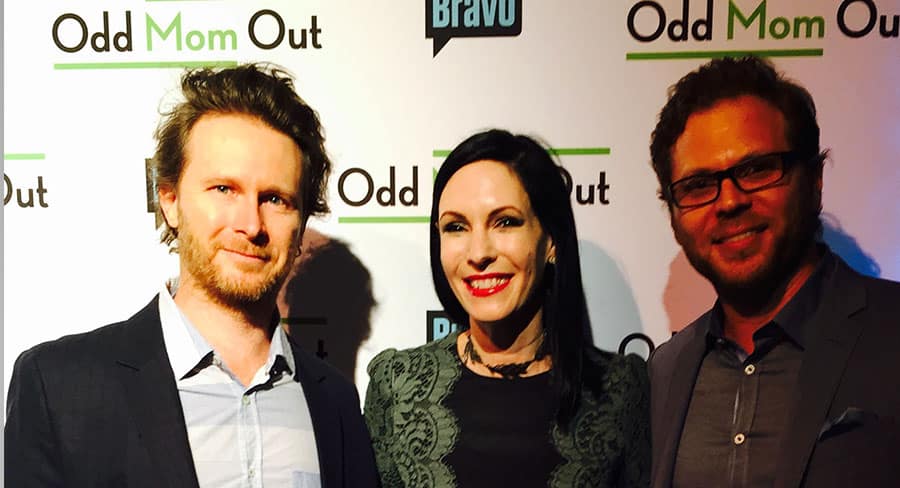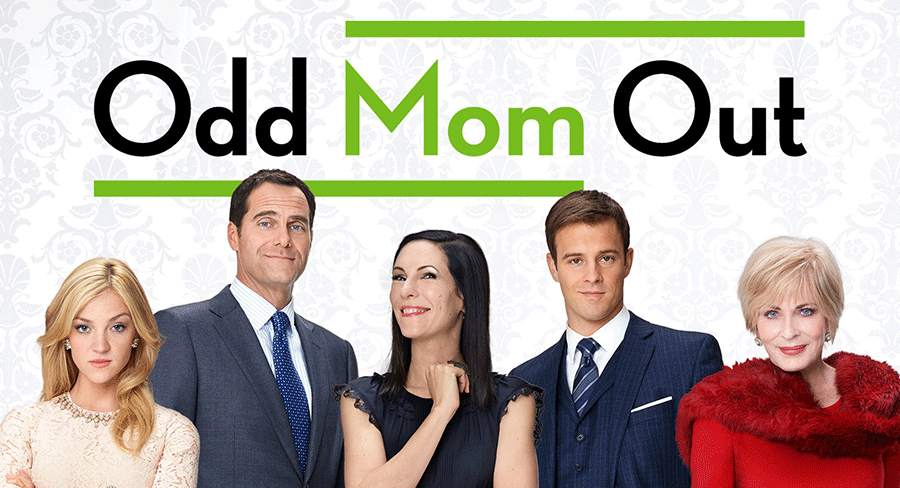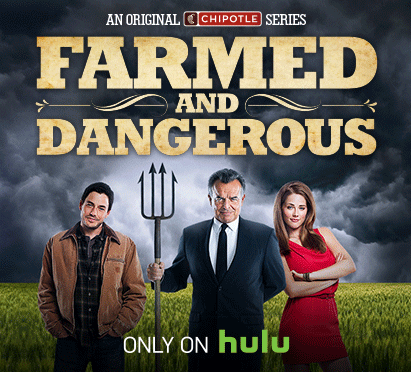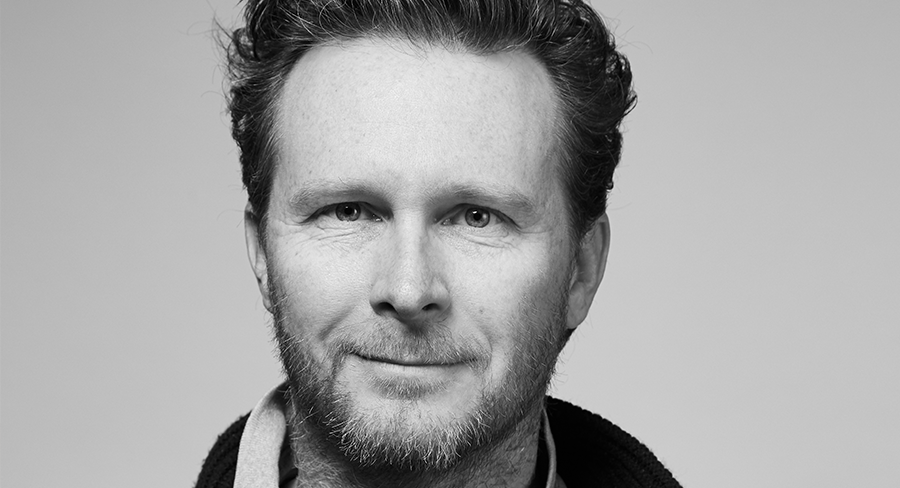The global media landscape is dotted with Aussies doing interesting things, at the centre of some of the biggest stories, working within some of the most well-known media brands, building their own media businesses and working with some of the industry’s most high profile figures.
In a continuing Mediaweek series, Aussie Abroad, Christian Murphy shines a light on some of our best media exports, kicking it on the global stage.
Tim Piper is one our most decorated creative minds. Over the last 20 years, he’s been responsible for some of the most viral advertising, including Unilever’s Dove Evolution, Dove Onslaught and the Becel Broken Escalator short, won most of the major advertising awards and been at the forefront or even ahead of some of the biggest global storytelling trends in the marketing and advertising business.
But you’d be mistaken if you thought it all came about as a result of a grand, master plan that he plotted out growing up as a young bloke in suburban Adelaide. His stellar career – he was listed as one of the World’s Top 50 Creative Thinkers by Creativity magazine and made Time magazine’s Top 200 Most Influential People in the World – is the result in large part to a constant love of doodling and a few key, almost accidental moments that have lead him to stunning success, landing him at the centre of the global advertising world in New York where he co-founded and co-runs a successful content storytelling business.
Coming from a long line of very successful lawyers dating back to 1882, who founded and ran one of the country’s most prestigious firms, he should have rightfully been advising clients on mergers and acquisitions. But as a young boy, his advanced illustration skills – perhaps drawn from his mother who was an illustrator and bit of an artist herself, encouraging Piper to draw – and love for writing comics ignited in him a deep desire to tell stories, setting his course down a different path to his father and brothers in the law.
After a graphic design degree at the University of South Australia (Underdale), he started freelancing as a designer, doing brochure layouts and logos for local businesses. He was introduced to an advertising firm and discovered to his great surprise they made commercials in Adelaide. So he turned his attention to advertising, landing his first full time gig at Charterhouse, perhaps back in the day, the less prominent of the Adelaide ad agencies alongside Clemenger and Y&R who were filled with creative imports from Sydney, Melbourne and even the UK. The Charterhouse experience turned out to be a game changer and set him on course to the career he’s built today.

Tim Piper with Odd Mom Out’s Jill Kargman
Charterhouse was creatively understaffed and its clients needed TV commercials. He wrote a script for the RAA, the agency’s most prized client. The agency brought in a highly awarded DOP to brief, because in order to save money and shoot on 35mm film there was no director assigned. While he had written the script, the only way he knew how to communicate his vision to the DOP was to draw it out, so he set about creating a shot by shot storyboard, landing his first role as a director, unbeknownst to him at the time, almost by accident.
The RAA spot, the first one Piper ever wrote and then directed, went on to win local awards, launched his career and gave insights into the creative process that have guided him ever since. Following stints at some of the biggest name global ad agency brands in Toronto (where he won a Grand Prix for Film for the Dove Campaign for Real Beauty, the top award at Cannes) and then in New York, he launched Piro, a multi award winning content and storytelling business he co-founded with Daniel Rosenberg (a TV and film producer and writer), focused on advertising and branded entertainment as well as traditional television and film projects.

Piro is a unique creative shop “of the moment” in many respects, providing solutions that marketers desperately need to cut through and make an impact in a dynamically changing and fragmented media environment, like the groundbreaking branded entertainment series produced for US fast casual, Mexican food brand, Chiptole titled Farmed & Dangerous and Bravo’s basic cable scripted comedy, Odd Mom Out, which ran for three seasons and was a Time magazine Top 15 best new shows on TV selection, to name but a couple of Piro’s big successes.
Tim Piper Q&A:
As you look back on it today, what has stayed with you throughout your career from those early days?
Piper: That first spot I did for the RAA taught me a lot it turns out, although I probably didn’t know it at the time. Fresh out of uni, with no experience as a director and not even aware at the time that I was actually the director on that spot, a tiny budget to work with and paired with a very experienced DOP, it was frankly quite overwhelming but we managed to make it work and probably because the DOP was very gentle with me and we worked well together. The spot went on to win one of the highest local awards and really cemented for me, as I look back, the importance of maintaining creative control.
Over my career, I have worked on campaigns with huge budgets and employed some big name commercial directors, only to have regretted it! Because on campaigns with smaller budgets, I will usually write and direct myself and invariably get better results. For me, I like to be hands-on and in control of the creative process and execute to my vision, or I often feel disappointed with the outcome. Executing a creative vision is one of the most nuanced aspects of the business, there are hard lessons learned when you execute the wrong way but you need those lessons to grow and improve. You can’t be afraid. You also have to be aware that out there is always a better creative vision. A different way to do something. So you have to know when to hand over creative control or when to listen to others more than yourself. And when not to. I’ve followed creative advice from other people who seem supremely confident only to regret it. And vice versa.
After such a prolonged period of success and many career highlights, what keeps you going?
It’s now a cliché, but it’s the ability to tell stories. It’s something that I’ve been doing since I was a child – doodling, drawing, writing comics, filming skits for the school dance, entertaining with story still keeps me really engaged, finding stories within the work we do. I look back on it now after having worked in recent years amongst real, long form story tellers in the film and TV projects we’ve done at Piro and see that advertising creativity is completely different to storytelling. There was a lot I had to learn and re-educate myself about regarding what good storytelling actually meant.
I had some instinctive knowledge: stories have a beginning, middle and end and in my work, there is always a strong structural sensibility to it, but the really big learning has been that the most powerful tool in storytelling is emotion – not the look, style, the aesthetic. Sounds obvious, but I would often get hung up on little details that don’t matter to storytelling – they just mattered to me as an artist and I would lose the bigger picture. I see advertising writers and directors fall into this trap all the time now. Focusing on the emotion of the story and drawing that out of the characters – in new and interesting ways, with twists and ups and downs, is far more important than getting the set or lighting just right.
You co-wrote and directed a series for Chipotle (a major U.S. fast casual, Mexican grill food brand) called Farmed and Dangerous (2014), a scripted comedy which premiered on Hulu (direct to consumer SVOD service like Stan, Netflix). How did the project come about and was it successful?
I’ll jump to the successful part because it’s a highlight. 800% return on investment and found to be one of the most persuasive pieces of content in the entertainment space. The CMO at Chipotle was looking to do something different for the brand, which was an upstart in the fast casual restaurant category in the US and was exploding at that time. He wanted to create something that would drive an outsized impact through PR basically because they didn’t have any budget for traditional media, they just couldn’t afford it. He found a web series which I had co-written and directed for shredded wheat cereal called “Putting the ‘NO’ in Innovation” and he really responded to the type of humour in that series and felt it was a good brand fit for what he wanted to do with Chipotle. So, he brought us in, walked us through what the brand stood for and agreed to fund development to build out story ideas. In one of our collaborative brain storming sessions with the client, we asked “who are your enemies, your friends, your stories and what story do you want to tell?”

Chipotle actually had a very strong point of view on this – their food is fresh, healthy, handmade in the shop and focused on organic, sustainable ingredients, nothing processed – and their biggest “enemy” or what they stood against was the industrialization and corporatization of the American food system. They were very concerned about what was happening to it and pointed out many enemies who were creating a system to enrich themselves – massive agricultural corporations, industry bodies and lobby groups – by manipulation and telling un-truths to drive their agenda.
To tell the Chipotle story, the obvious reaction and potential route would be to make a documentary like Food Ink which many others have done and are still doing today, but Chipotle didn’t want to do that, they felt it would be too depressing for the issues they wanted to take on and they wanted a brand payoff as well, something more positive and were very open to humour as a way to achieve that. In their world there were great archetypal characters that were real to them, ‘villains’ who were causing great harm and mischief within the American food system, greedy CEO’s, manipulative lobby and PR groups, industry bodies who were trying to manipulate consumers and tell un-truths.
Immediately we saw an opportunity to make fun of these evil people, ridicule them and create a good guy that stands for the Chipotle brand. With the bigger idea cracked, we got to work on a script for a pilot using a more traditional long form storytelling approach. We set up a writer’s room and installed a seasoned TV writer and an Oscar nominated screen writer, possibly the first time this approach was contemplated for a brand story and set about developing story ideas, character and narrative arcs and wrote the pilot. Continuing the more traditional, long form story telling approach, we bought the pilot script back to the Chipotle boardroom and did a table read with five actors, like you would for a regular TV pilot or a movie.
What happened next though, really surprised us. Chipotle wanted to push the dark humor further and asked us to “blow up a cow”. Actually blow up a cow. In the script. The cow ended up being a giant metaphor for what they felt was happening in the American food system and would serve as an outrageous and genius visual trigger to make a strong statement and impact. We filmed the pilot, a half hour show for the cost of a 60 second commercial and when we showed it to Chipotle, they asked us to produce more, investing in a further three half hours.
So now, we really are all in. With no media budget to support the roll out, this really had to work for Chipotle. And thankfully it did. Beyond their and our wildest expectations. The release of the trailer alone achieved all media benchmarks set up for the whole campaign. Organic, earned PR out surpassed any media campaign spend they’d ever done, achieving an 800% return on spend which was analysed by an independent third party.
The series was the only branded entertainment project included in The Participant Index – a media-impact research system from Participant Media, partnered with the Bill and Melinda Gates Foundation that examines the “social impact” of entertainment on its audience – alongside projects like The Inconvenient Truth, Food Ink, Waiting for Superman, Lincoln and documentaries on social issues like fracking and sustainability. Farmed and Dangerous beat every other project in making an impact. The research – against a panel of 5,000 participants (I’m not sure if quoting me on it) who had to watch every project submitted – showed that people changed their eating habits after seeing the series.
Author Note on Awards for Farmed and Dangerous:
Cannes Lion for branded Content and effectiveness finalist
Clio Awards for Branded Entertainment and Content
Most successful series premiere on Hulu at the time.
Farmed and Dangerous is without doubt a pioneer in the space and arguably one of the most successful branded entertainment series of all time, what lead to its success and has the impact of this success lead to an increase in this story driven approach to marketing by brands?
There were lots of factors that lead to the series success. Brands now have a massive distribution ecosystem at their fingertips, where they can self-publish great stories without having to go through a third party. I think fundamental to the success of Farmed and Dangerous was that we created a story for the brand that was based in truth, that reflected what they believe in and stand for in terms of their values and we found a unique way to bring that to life through story and strong characters. We found a way to create a story inspired by the brand’s POV. We stacked the deck in our favor by bringing on an Oscar nominated writer and TV writer. These guys cost less than freelance advertising writers btw. The other really key factor here of course was our partner at Chipotle and the CMO, Mark Crumpacker in particular. Mark was incredibly supportive and really pushed us to take it as far as we could with the story and characters.
In terms of the current branded entertainment landscape, Farmed and Dangerous was produced at a time when the space was becoming very buzzy and lots of brands were talking about the importance of content and storytelling in their marketing and we were held up across the industry as the ‘gold standard’. And while branded entertainment is still a much talked about space and there is a lot more emphasis on content as a marketing tool, I feel brands are generally struggling with how to execute emotional storytelling. This, coupled with the challenging business model around content and storytelling – it’s expensive, it takes time and you need a very strategic distribution plan in place even if you’re self-publishing – makes proving out an ROI with traditional marketing metrics or metrics not aligned with the project, very challenging.
For brands that are brave enough to try this approach – and if you do get it right, it can deliver outsized returns and is well worth the investment – the real trick is to figure out from a brand perspective, what story is worth telling and adjusting the storytelling to fit that purpose in a truly authentic and emotional way. And if there’s not a story to tell, be honest with yourself and shift strategy, do something more traditional like a stunt, promotion or something that will achieve those overall brand objectives and metrics.
Tomorrow: Tim Piper on his New York creative agency Piro, working with Kendall Jenner for Estee Lauder and working in the US and Canada.
